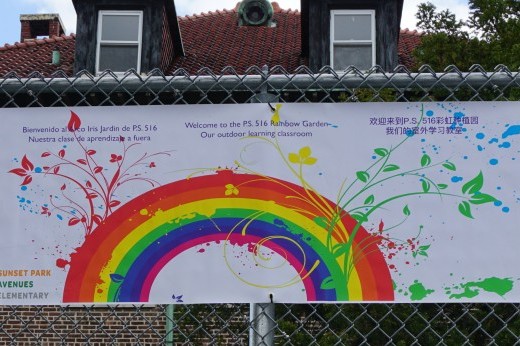Pull up one of the Adirondack-style lounge chairs on the Solaire’s terrace-level green roof, and enjoy the million-dollar view. The sweep of riverfront before you includes the New Jersey shoreline, New York Harbor, the Statue of Liberty, and river traffic in the Hudson just below. And the terrace itself—a lush, colorful garden—is as lovely as it is environmentally functional.
A second green roof on the top floor further supports the building’s ambitious goals for sustainability. With both rents and occupancy rates higher than those of most conventional high-rises, the Solaire is proving that going green not only saves energy and money over the long term, it also attracts a growing number of tenants who want to live a sustainable lifestyle.
The Solaire’s two green roofs are classic examples of intensive and extensive designs. The 4,800-square-foot intensive green roof system on the 19th-floor terrace is a communal space open to all residents. Its irrigated soil layer, which ranges from 6 to 18 inches deep, supports trees, shrubs, and herbaceous perennials. It’s also designed to absorb 70 percent of the rainwater that reaches it and to channel the rest to a 10,000-gallon basement cistern, where it is filtered and used to irrigate the roof and a ground-level park.
The 5,000-square-foot extensive system above the 27th floor is a much simpler affair—a sedum lawn in four inches of soil. Its purpose is entirely environmentally functional. Together the two systems cover 75 percent of the building’s roof area, meeting the stringent green building requirements for all structures within the borders of the neighborhood’s state-run development authority.
Battery Park City now includes 26 residential towers. Three of them, including the Solaire, have LEED Platinum certification, and the neighborhood’s green features are gaining cache. When the building opened in 2003, 10 percent of its tenants were drawn to it because of its sustainability, says Michael Gubbins,vice president of residential management at Albanese Development Corporation. Today 60 percent of renters say that’s why they chose to live here.
“Even in a slow market we have full occupancy, and in a strong market we get a 10 percent premium on rents because we’re in an environmentally friendly building,” says Gubbins.
The 19th-floor roof is popular with residents, Gubbins says. The landscape design firm Balmori Associates created a space with four quadrants—garden “rooms” set apart by hedges of trees, tall shrubs, and planting beds. Growing in the beds are grasses, flowering plants, and groundcovers in compact groupings that create clusters of color, including Rosa, Spirea, Rudbeckia, Begonia, Pachysandra and sedum species and cultivars. The plantings create a park-like setting for residents who come out to relax in lounge chairs or picnic.
More: Learn about rain gardens, green roofs, bioswales, and rain barrels in Brooklyn Botanic Garden's Guide to Rainwater Harvest.
Tenants never see the building’s highest rooftop, where a sedum bed skirts the base of a mechanical room, clad with photovoltaic panels, and around the satellite dishes. The sedum planting is thriving, but not in its original form: “We started with maybe 15 varieties, and half of have taken off,” says Mark Thomann, director at Balmori. “Even though we researched this sedum mix, we found that the pigeons like certain species, particularly like the red ones. They eat the entire plant.”
Thomann and his colleagues at Balmori hope that success stories like the Solaire will help fuel a bigger trend toward including green roofs in newly built residential realestate. “Developers need to understand the payback, and have it driven home,” says Thomann. The Solaire and nearby new luxury green high rises are showing the way.
Fast Facts
INSTALLED: 2003SIZE: 9,400 square feet
TYPES: Intensive and extensive
SIZE: 9,400 sq. ft. TYPES: Intensive and extensive
OWNER: Albanese Development Corporation
ARCHITECT: Cesar Pelli & Associates
LANDSCAPE DESIGNER: Balmori Associates
GREEN ROOF SYSTEM: American Hydrotech
COST: Intensive roof: $50 to $60 per square foot; extensive roof: $25 per square foot
FUNDING: Private, with $2.7 million tax credit from New York State



